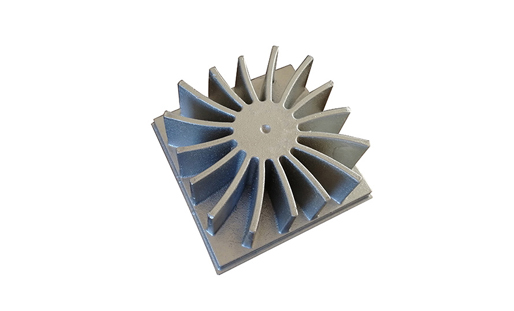The design of die castings involves four aspects:
a, that is, the requirements of pressure casting on the shape and structure of the part;
b. Process performance of die castings;
c. Dimensional accuracy and surface requirements of die castings;
d .Determining the parting surface of die castings;
The design of die casting parts is an important part of the production technology of die casting. The following issues must be considered in the design: the choice of mold parting surface, the opening of the gate, the choice of the position of the ejector pin, the shrinkage of the casting, the dimensional accuracy guarantee of the casting, Prevention of internal defects, requirements related to casting holes, requirements related to shrinkage and deformation, and the size of machining allowances;
Second, the design principles of die-casting aluminum parts are:
a. Correct selection of the material of the die casting,
b. Reasonably determine the dimensional accuracy of die castings;
c. Try to make the wall thickness distribution as uniform as possible;
d. Increase the corner of the craft garden at each corner to avoid sharp corners.
3. Die-casting parts can be divided into two categories according to the requirements of use. One is the part that bears a larger load or the part with a higher relative speed of movement. The inspection items include size, surface quality, chemical composition and mechanical properties (tensile strength , Elongation, hardness); the other is other parts, the items to be checked are size, surface quality and chemical composition. When designing die-casting parts, it should also be noted that the parts should meet the process requirements of die-casting. The technology of die casting is considered from the position of the parting surface, the position of the top push rod, the requirements of the casting hole, the requirements of shrinkage and deformation, and the size of the machining allowance. Reasonably determining the parting surface of the die-casting surface can not only simplify the structure of the die-casting mold, but also ensure the quality of the casting.
Requirements for the design of die casting parts
First, the shape and structure requirements of die castings:
a. Eliminate the internal undercut;
b. Avoid or reduce the core pulling position;
c. Avoid core crossing; Reasonable die-casting structure can not only simplify the structure of die-casting molds, reduce manufacturing costs, but also improve the quality of castings.
Second, the wall thickness requirements of the casting design:
Die-casting aluminum motor casing (usually called wall thickness) is a factor of special significance in the die-casting process. The wall thickness is closely related to the entire process specification, such as the calculation of the filling time, Selection, calculation of solidification time, analysis of mold temperature gradient, effect of pressure (final specific pressure), length of mold retention time, level of ejection temperature of the casting, and operating efficiency
a. The thicker wall thickness of the part will significantly reduce the mechanical properties of the die-casting, and the denseness of the thin-walled casting is good, which relatively improves the strength and pressure resistance of the casting;
b. The wall thickness of the casting should not be too thin. If it is too thin, it will cause poor filling of the aluminum liquid, difficult molding, poor welding of the aluminum alloy, prone to defects such as cold insulation on the surface of the casting, and bring difficulties to the die casting process. With the increase of defects, defects such as internal pores and shrinkages increase. Therefore, under the premise of ensuring sufficient strength and rigidity of the casting, the wall thickness of the casting should be minimized and the thickness of the section should be uniform. In order to avoid defects such as shrinkage, The thickness of the thick wall should be reduced (reduction of material) and increased ribs; for large-area flat-plate thick-walled castings, ribs are provided to reduce the wall thickness of the casting; according to the surface area of the die-casting, the reasonable wall thickness of the aluminum alloy die-casting is as follows:
Third, the requirements of casting design ribs:

Die-Casting Aluminum Parts China
The function of the rib is to reduce the wall thickness to increase the strength and rigidity of the part, prevent the shrinkage and deformation of the casting, and prevent deformation of the workpiece when it is ejected from the mold, and act as an auxiliary circuit (the path of metal flow) during filling. The thickness of the die casting ribs should be less than the thickness of the wall where it is located, generally 2/3 ~ 3/4 of the thickness at that place;
Four, fillet requirements for Die-casting aluminum parts china:
All wall-to-wall connections on die-castings, whether right-angled, acute-angled, or obtuse-angled, blind holes, and groove roots, should be designed with rounded corners. Rounded corners are not used only when the part is expected to be determined as the parting surface The other parts must be rounded corners. The rounded corners should not be too large or too small. Too small die castings are prone to cracks and too large to cause loose shrinkage. The round corners of die castings are generally taken: 1/2 wall thickness ≤ R ≤ wall. Thick; The role of the fillet is to help the metal flow, reduce eddy current or turbulence; avoid cracks caused by stress concentration due to the presence of the fillet; when the part is to be plated or coated, the fillet can be obtained Uniform plating to prevent deposition at sharp corners; it can prolong the service life of die casting molds, and will not cause chipping or cracking due to the sharp corners of the mold cavity.